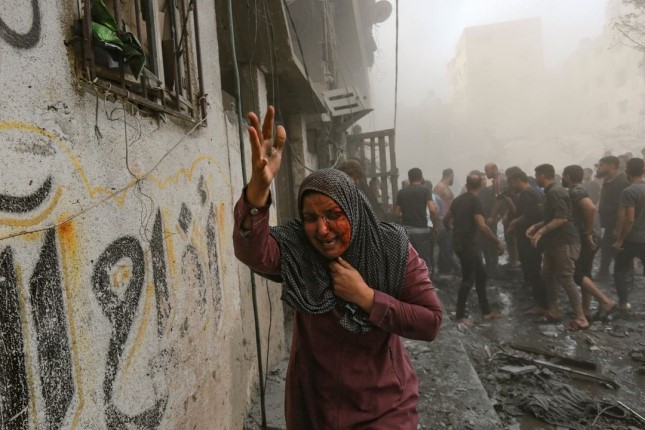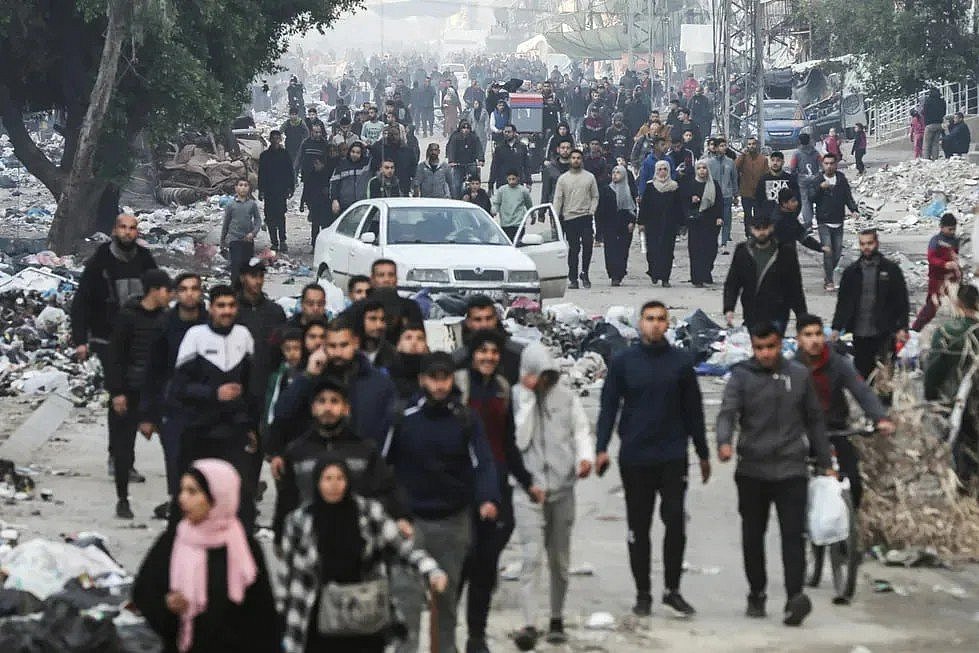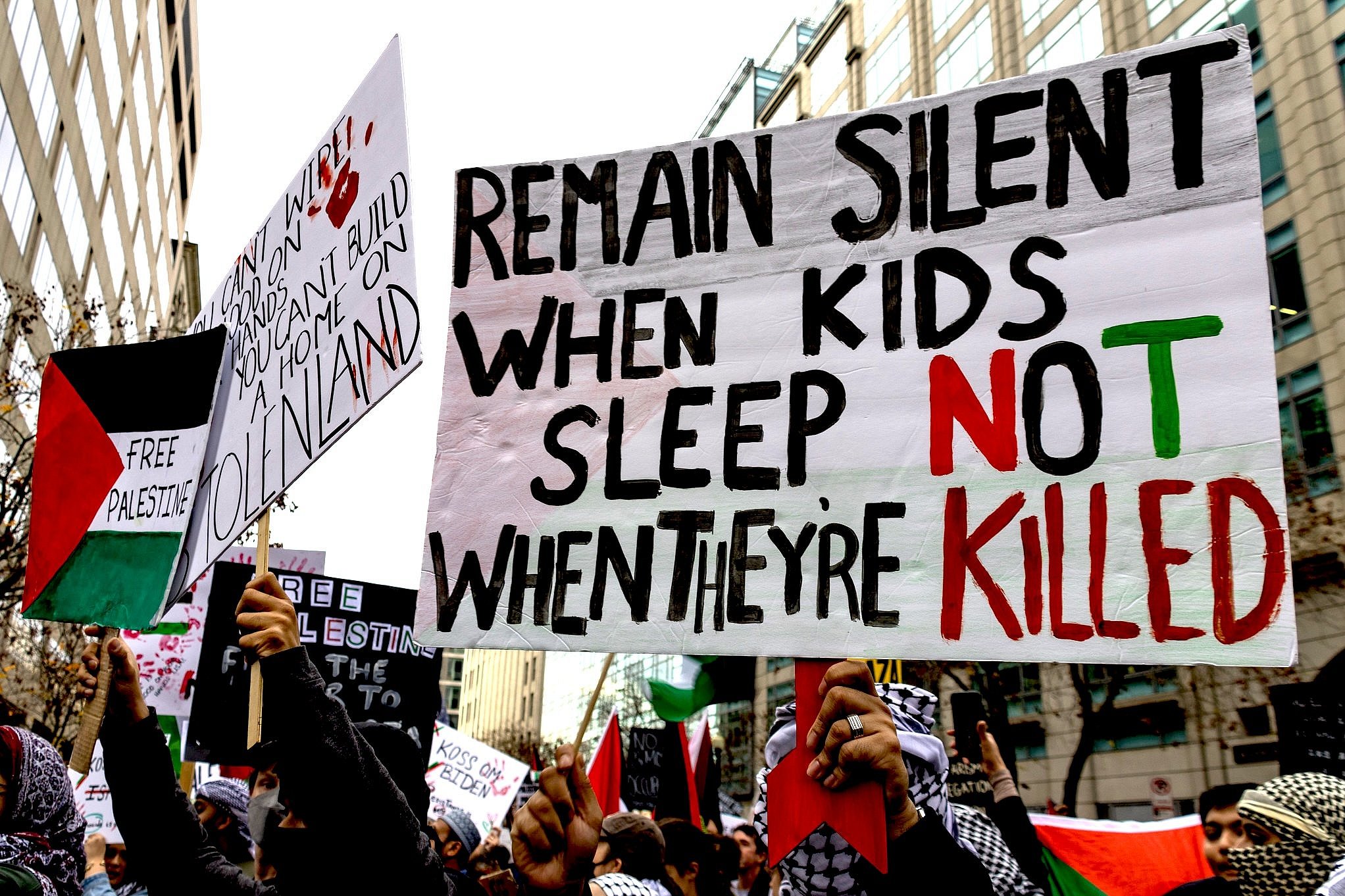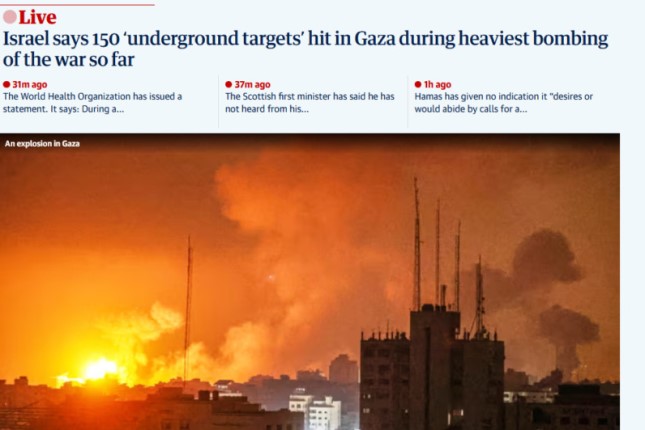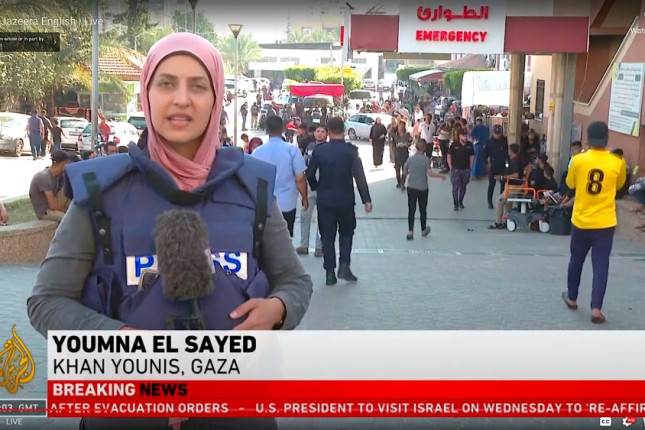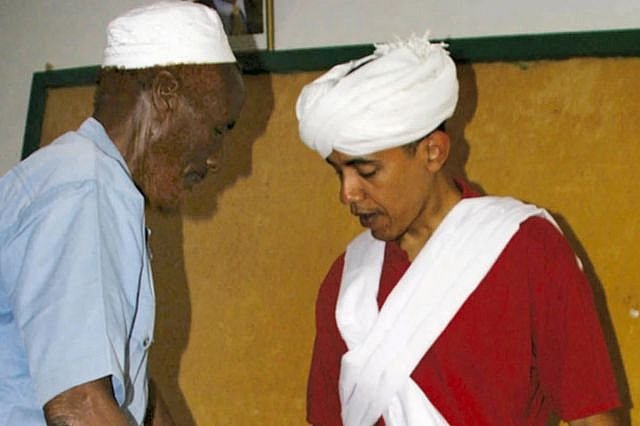Another 15,000 have been wounded, and victims of the bombardment have swamped the 19 hospitals in the Gaza Strip.
The 5,087 officially killed include more than 2,000 children under 18 and about 1,100 women, the Health Ministry said Monday. More children have died in Gaza in two weeks than have been killed in the US-NATO war against Russia in Ukraine in 20 months.
Even the horrific toll reported by the Health Ministry seems likely to be a major undercount. The Israeli Air Force says that it has so far carried out strikes against more than 10,000 targets in Gaza, and its huge bombs and missile warheads, all supposedly “precision” weapons, are targeted against concentrations of people, either inside buildings or out in the open.
A staggering 1.4 million out of the 2.3 million population of Gaza have fled their homes, according to the United Nations Relief and Works Association (UNRWA), which provides aid to the Palestinian population. Nearly 580,000 are seeking refuge in UNRWA-run schools and shelters, the agency said. Some 40 percent of the housing stock of the entire enclave has been destroyed or damaged in the Israeli bombing. UNRWA said that 29 members of its staff, half of them teachers, have been killed since the bombing began.
The most criminal aspect of the overnight bombings of October 22-23 is that many of the 320 strikes acknowledged by the Israel Defense Forces were in southern Gaza, the region where the IDF has told Palestinians to go to in order to avoid becoming targets in the impending ground invasion by Israeli forces.
IDF warplanes have dropped tons of leaflets on northern Gaza telling the population to evacuate to the south. But the fighter bombers and missiles have followed the movement of the population and targeted hospitals, refugee encampments and columns of people fleeing the north.
Al-Jazeera reported 61 deaths at the Abou Youssef Al-Najjar Hospital in Rafah, at the southernmost point of the Gaza Strip, where the crossing into Egypt has become a major chokepoint. The bodies were laid out on the hospital grounds for lack of space inside the facility.
The news service’s correspondent in southern Gaza wrote, “It’s a critical condition,” with at least 28 people killed near Rafah and 14 more killed near a petroleum station in Khan Younis that was hit by an Israeli strike. Fuel shortages could force several hospitals in southern Gaza to “run out of service” soon.
The movement of a few dozen aid trucks through the Rafah crossing from Egypt was finally permitted by Israeli authorities. They are delivering a “drop in the ocean,” according to UN aid officials, and the aid is limited to food, water and medical supplies, but not the fuel which is desperately needed to run hospital generators and water pumping and desalination facilities.
According to one aid official, 40 trucks a day carrying diesel, benzene and cooking gas entered Gaza in August. Since October 7, not a single truck has been allowed in. Israeli Energy Minister Israel Katz said in a statement October 12, “Humanitarian aid to Gaza? No electric switch will be turned on, no water tap will be opened and no fuel truck will enter until the Israeli abductees are returned home.”
Even this tiny amount of aid entering southern Gaza is being withheld from Gaza City and other parts of northern Gaza, once home to a majority of the population of the enclave. The al-Shifa Hospital, the largest in Gaza City, with a capacity of 700 patients in ordinary times, currently has 5,000 patients and 45,000 gathered around its grounds seeking safety and shelter.
“The north didn’t receive anything” from incoming aid, Mahmoud Shalabi, an aid worker, told the Associated Press. The worker for the Medical Aid for Palestinians group based in the northern town of Beit Lahia said, “It’s like a death sentence for the people in the north of Gaza.”
According to the AP, Shalabi also confirmed the earlier report that the Indonesian Hospital in northern Gaza has ran out of fuel and suffered a power outage, leaving it in total darkness.
The Palestinian news agency WAFA reported that Israeli warplanes launched a series of raids Monday evening near Al-Quds Hospital, which is affiliated with the Palestinian Red Crescent Society in Gaza.
Israel issued evacuation orders to 17 hospitals operating in Gaza City, according to the UN humanitarian office, but the hospitals have not moved people, “given this would endanger the lives of vulnerable patients.”
This defiance sparked last week’s attack by Israel, on October 17, in which nearly 500 Palestinians were massacred at the Al-Ahli Arab Baptist Hospital in Gaza City. The Israeli authorities, the Biden administration and the corporate media continue to deny that Israel was responsible for this atrocity, claiming instead that it was the result of a rocket misfired by the Palestinian resistance group Islamic Jihad.
The New York Times actually published a groveling apology in its Monday edition, expressing its regret for having initially given a relatively truthful account of the massacre, rather than denouncing Hamas as a dubious source of information. Nonetheless, a news report the same day in the Times acknowledged, “Israel has also turned down requests by The Times to provide logs of all its military activity in the area at the time of the strike, and declined to specify the video on which it based its assessment of Palestinian responsibility.”
US media outlets reported that the Pentagon has sent Lt. Gen. James Glynn, a three-star Marine general, to Israel to share his expertise on urban warfare. Glynn served a two-year tour in Iraq in 2006-2007, during some of the heaviest fighting against Sunni insurgents and later commanded the Special Operations Command of the entire Marine Corps.
Also Monday, the Times of Israel reported mounting pressure from IDF commanders on the Netanyahu government to give the green light for the ground invasion of Gaza. “After 16 days of airstrikes, the IDF has told the government that it is fully prepared for a ground offensive in the Gaza Strip, and believes it can achieve the goals set out for it, even at the risk of heavy casualties to soldiers,” the newspaper said.
The IDF command reportedly “fears that further hostage releases by Hamas could lead the political leadership to delay a ground incursion or even halt it midway.” Hamas released two American hostages Friday night and two Israeli hostages on Monday night.
Photo: A wounded Palestinian woman runs following Israeli airstrikes that targeted her neighbourhood in Gaza City, Monday, Oct. 23, 2023 © AP Photo / Abed Khaled.
Source: World Socialist Web Site.
